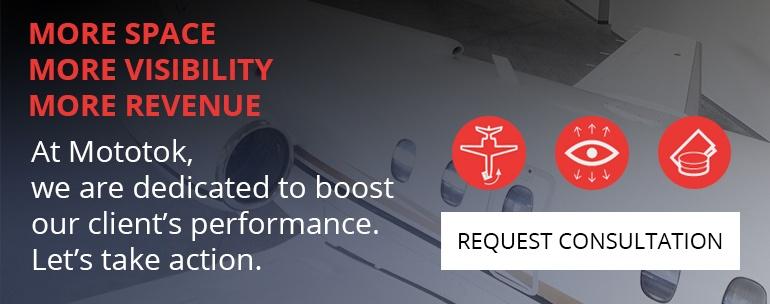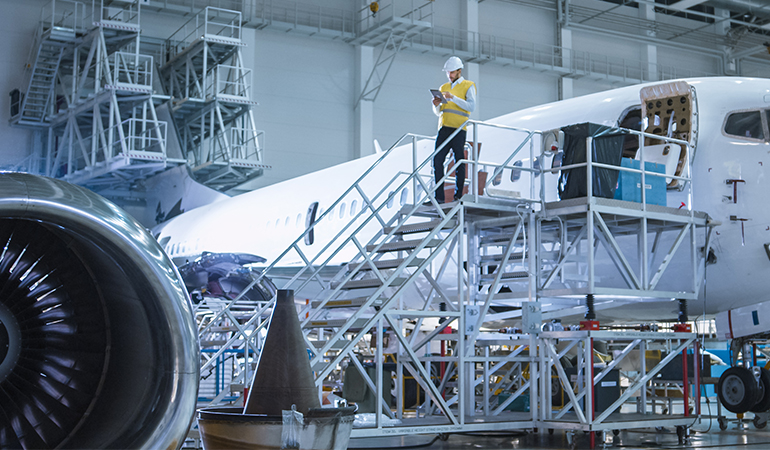The past year has taught us a lot of lessons about patience, flexibility, adaptability, and perseverance, whether we wanted to learn them or not. But this was all done under the hope that the downturn in aviation would be a temporary one. But that is proving to look less and less hopeful. One of the most recent predictions by the IATA is that air travel would not fully recover until 2024.
Looking Past the Surface
To better understand what the industry is facing, we need to have a look inside what is happening in it right now.
Across the world, the landscape is essentially the same in terms of impact. Major airlines see positive growth at times, but those are largely punctuations in a market that is still struggling to get back to where it was pre-COVID. Passengers still appear to be leary to leave home with the unpredictability of so many governments worldwide. Accordingly, airlines have been slow to recover fully. To be more precise, passenger airlines have been slow to recover, and they constantly remain on-edge because, at any given time, a hub or route into and out of a given country or even state may be shut down.
Contrary to the woes of passenger-carrying airlines, freight airlines have been booming. FedEx has strode past its five-year high and is dominating the aerial freight industry. Fellow American freighter UPS has been no slouch either; in fact, their present valuation crushes anything in the past five years.
It's not just freighters that are booming, either. Private jets are booked, and their companies are being utilized at levels that have not been seen in the past. Private jet groups anticipate this will continue to be the case as those who can afford to use them choose to use these services. They are a great alternative to airliners due to their ability to sanitize thoroughly and quickly and easily maintain travelers' rosters to narrow potential COVID-carriers.
The key takeaway here is that MRO equipment's outlook is not dire; it is just contingent upon marketing the key players in the market. FedEx has a fleet of over 650 aircraft, UPS over 500, DHL nearly 200, and so on. With the economic booms being seen in freight, the market is ripe for growth and modernization.
Growth and Modernization with the right MRO equipment
So this drives a new predicament: how do we go about servicing growing fleets when standard safety protocol dictates social distancing and reduced workforces?
The stark reality is that these fleets have to be serviced and maintained as they always have been; this is a non-negotiable. Furthermore, the shortage of aircraft maintenance technicians has not gone anywhere. The passenger airlines were largely hit the hardest in the pandemic, with an estimated 122,600 jobs lost since February 2020, which amounts to nearly a quarter of airline jobs being lost. Early retirements and voluntary separations were the initial controls implemented, which were somewhat effective with some 50,000 employees taking voluntary reductions at Delta, along with around 18,000 early retirements and separations from the company. The world's largest airline, American Airlines, likewise reduced by around 20,000 for long-term leave and early retirements.
But the great balance remains that while air carriers are hemorrhaging, freight haulers and private jet companies are exploding. And passenger airlines did lose a lot of employees, they are rebounding ever so slowly, and they will have to do something about the employees who have parted ways. Those who left voluntarily or were furloughed may be viable options to return to the workforce, but those who chose to retire can be counted out permanently. The void left by departing technicians will be measured in the tens-of-thousands.
But the dichotomy remains: as long as social-distancing requirements persist and show no signs of slowing, the technician force will remain thinned despite the need to expand in a large segment of the flying world. Maintenance fleets are now faced with the impetus of modernizing their fleets to compensate for a smaller technician workforce, and it appears that the most viable solutions are to compensate for reduced workforces by investing in services and commodities to aid a diminished workforce.
MRO equipment & Tools for Modernization
Drones
Drones are seemingly finding themselves in every facet of life, from real estate to aerial surveys, pizza delivery, and aircraft inspections. While pizza delivery does sound enticing, aircraft inspections via drone are more out of speed.
This technology's beauty is that it was in work well before the pandemic of 2020 was on anyone's radar, so it is well into its adolescence. Drones as inspection tools are not there to replace people but rather to supplement them. Drones allow a single inspector to cover that area that would take multiple individuals or cover the same size as a single inspector in a fraction of the time. Also, a drone can be programmed with a specific series of courses to ensure 100% visual coverage, a verifiable task that is much more difficult for a human to verify when conducting exterior skin inspections traditionally.
Internet of Things (IoT)
The Internet of Things (IoT) is tying together our lives in ways that we could have never even dreamed of just a handful of years ago. And it is no difficult thing for the average person. Most of you are likely reading this using an Alexa device or series of devices, or Nest, or Ring, or any of the thousands of other IoT-based technologies readily available at nearly any retailer.
In aviation maintenance, IoT is on the very cusp of a full-on breakout. Here are a few of the ways that IoT can influence the reduced workforce immediately:
- IoT will tie into sensors that feed big data, allowing the technician to implement data analytics to better understand fleet health and target specific problem areas. When technicians can pull from data gleaned across an entire fleet, they can better evaluate potential fixes with fewer man-hours committed.
- Wearable products that are commercially available off-the-shelf allow technicians to have access to up-to-the-second regulatory and technical information and information on fleet health. It will significantly reduce the administrative burden on maintenance personnel. Anyone who has spent considerable time in aircraft maintenance knows well the amount of time squandered on administrative work, which translates to man-hours, which translates to personnel required.
Training
Perhaps the biggest hurdle ahead of the airlines will be employing technicians who are technically proficient. There is absolutely no way that you can replace 35 years of experience in a retiring technician or a furloughed worker who chooses to leave the industry altogether. Thankfully, augmented reality is a medium that is poised to help bridge the gap by providing completely accurate representations of structures, systems, sub-systems, components, and any task you can imagine. Our imaginations are the only actual limitations for these things right now.
This does not mean that we will be able to replace hard-earned experience altogether. Still, we have tools to advance the process by giving technicians-in-training a three-dimensional view of the aircraft and procedures. And this is not geared strictly at those entering the workforce for the first time; this is an invaluable tool for refresher training for technicians, or to transition technicians to a new airframe, or even a new practice.
Ground Support Equipment
Advances in tech, IT, IoT, AI, etc., are exciting and promising for the aviation maintenance world, but the truth is that maintenance techs work in harsh conditions, in the elements. No matter how many techs are employed, it never seems like there are enough hands for some jobs, and now there will be even fewer available for the foreseeable future. Ground support equipment (GSE) is an area ripe for an upgrade, and it is here now. Technological advances have created incredible robotics, very suitable for automatic guided vehicles (AGVs). Manned solutions include remote-controlled tugs suitable for aircraft from small- and medium-size wheeled helicopters, private jets, and small turboprops, all the way up to most single-aisle airliners.
When manpower is at an all-time low capacity and availability, along with restrictions on having personnel near each other, a low-maintenance electric tug in which a single technician operates is an obvious solution. A remote control electric tug will offer years of reliable, clean, and quiet operation, which will give your reduced workforce a leg up on the competition.
Conclusion to changes in MRO equipment
COVID-19 threw the world for a loop, and perhaps no industries more than the travel industry, particularly aviation. But the recovery is fully underway; people are out and about, and air freight is booming. Workforces are diminished after so many cuts, so any tools available to quell the shortages are on the table. Remote-controlled tugs are a reliable and proven solution and will take your ground operation into the future.
You needed to restructure your organization in the course of Covid-19?
Let’s dive into the possibilities of technology for your business. Request a free consultation now!


Comments